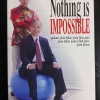These days, online news is actively publishing news related to our Minister of State Owned Companies, Dahlan Iskan. One of them is the selling of e-Toll cards as a new way to pay for toll. Latest marketing strategies are by selling the card on the gates by public figures, giving temporary discounts, and by direct prizes. But, how effective is the promotion on the long term?
e-Toll card (herewith called “card”), which adopts the touch and go principle, are widely believed to be an effective way to reduce the queues in toll gates. For me, I had used the card on its first days back then on 2009. The reason to use it was to see how effective the system compared to the “old way” (by cash). My conclusions back then are:
- In term of money paid, I did not see any advantage since there is no tariff difference whether I paid in cash or by card. Worse, I had to retain Rp 10,000.00 in my card, which means that I had to pay 10,000.00 plus the amount of toll tariff in advance without any discount. It is bad for my cash flow.
- In term of service time, I also did not see any advantage since the service time is as long as if I paid with cash. Using card back then means that you gave your card to the operator, getting tapped, and took it back from the operator (while if paying with Rp10,000.00, the operator is quickly give Rp 3,500.00 as the change in seconds, sometimes on the same time). In 2012, automatic (self service) toll gates are available, however not in all gates, which means that those 2009’s way is still occurred.
- In term of reliability, some readers are often not functioning. The toll operator even places the sign to tell us whether the reader is functioning or not. So even I bought the card, I still have to provide cash reserve just in case the reader is not working. So... what’s the point of buying the card? I hope in 2012, this issue is solved.
- In term of interoperability, the card back then can only be bought and topped up in Bank Mandiri and only be used to pay toll. Today, the card can also be used in Indomaret (a mini market) and Pertamina’s petrol stations; however I don’t know whether you can top up there or not.
So when my card’s credit reached Rp 15,500.00, which means that I had to top up in order to use it again, I decided to go back to the “old way”. Until today, I am still not going to use it back despite of the promotions because the card system is more troublesome than using cash. I am sure that my views are the same as the other users and that become one of the reasons why the selling is under expectation.
If I put my feet on the “operator’s shoes”, I understand that the card system will reduce operational cost since it will require less man power and minimize leakage in income. Furthermore, it will reduce the need of change money in which providing it need additional cost as well.
Today, most people are still prefer to store their wealth in bank notes rather in cards, So in order to promote the use of e-Toll card, operators should be focus on fiscal advantage (i.e. paying less with e-Toll card permanently). Success story for this strategy came from credit cards and online coupons promotions.
Additional note for the e-Toll system, to solve the queue problems on toll entry, DSRC system should be used instead of RFID (touch and go) system. However, increasing input will need additional capacity on the output (toll exit). If not, queue back in toll exit will disturb the toll flow. There is no better remedy for this than to implement a comprehensive, city size, Travel Demand Management (TDM)









